Select your language:
Follow us:
Select your language:
Follow us:
Hugo Pratt (1927-1995) is considered one of the greatest graphic novelists in the world.
His strips, graphic works, and watercolors, have been exhibited in major museums, such as the Grand Palais and Pinacothèque in Paris, the Vittoriano in Rome, Ca ‘Pesaro in Venice, Santa Maria della Scala in Siena.
The term “drawn literature” (graphic novel) was coined to define his genre. He has been cited by authors and artists including Tim Burton, Frank Miller, Woody Allen, Umberto Eco, and Paolo Conte. He lived in Italy, Ethiopia, Argentina, England, France, Switzerland, and he traveled the world over.
When I want to relax
I read an essay by
Engels.
When I want to read
something hard,
I read Corto Maltese.
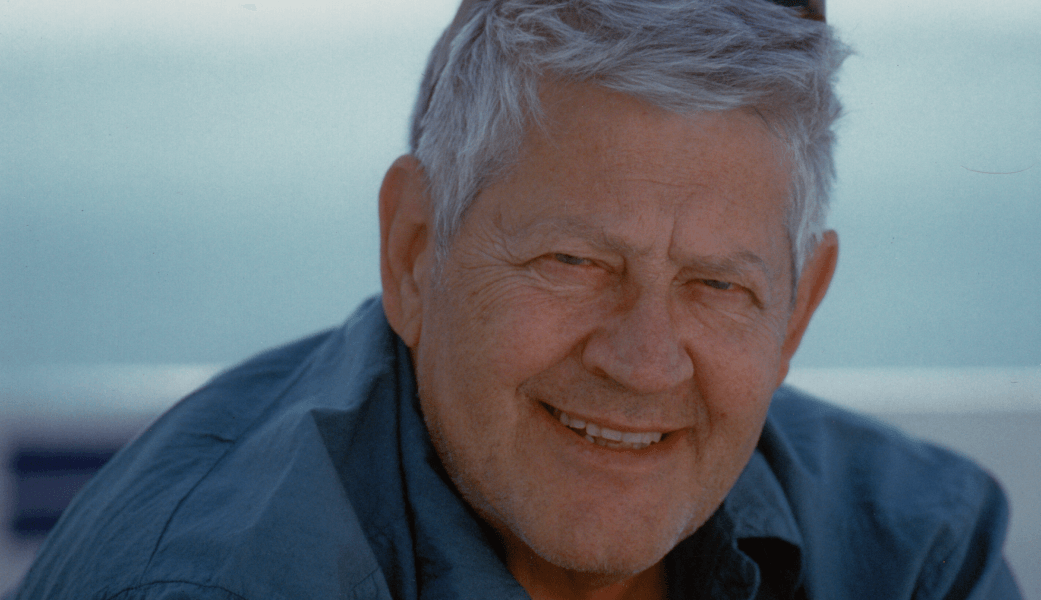
Hugo Pratt was born on 15th June 1927 in Rimini but he spent all his childhood in Venice in a very cosmopolitan family environment. His paternal grandfather Joseph was of English origin, while his maternal grandfather was a Marrano Jew and his grandmother was of Turkish origin.
In this melting-pot of races, beliefs and cultures steady mixing one with the other, his mother Evelina Genero was a lover of esoteric sciences, from cabala to cartomancy, while his father Roland was a typical man of that time, a regular that in 1936 was transferred to the Italian colony in Abyssinia, which marked the beginning of Hugo Pratt’s youth in Africa. When he was just 14, he was forced by his father to join the colonial police, thus coming into contact with the military world of that time in Abyssinia, which included not only the Italian army but also the British, the Abyssinian, the Senegalese and the French army.
The charm of all those different uniforms, crests, colours and faces would be steady present in all his life and works. However, at the same time he also made friends with his Abyssinian peers, which allowed him to learn the local language and integrate in a world that usually colonisers never knew.
During that period he got interested in adventure novels, eagerly reading novels by James Oliver Curwood, Zane Gray and Kenneth Roberts. He also discovered the first American adventure comic strips and particularly “Terry and the Pirates” by Milton Caniff, which impressed him so much that he decided to become a cartoonist.
In 1943, after the death of his father, he returned to Italy and attended the military college in Città di Castello. Thanks to his excellent knowledge of English, in 1944 he became an interpreter for the allied army for which he worked until the end of the war. In 1945, Hugo Pratt took part in Venice together with some friends to the editing of the comics magazine Asso di Picche (Ace of Spades), which marked the official beginning of his career as cartoonist.
Thanks to that magazine, the “Venice group” was contacted by an important Argentinian publishing house. In 1950 Hugo Pratt thus left for Buenos Aires where he then lived for about thirteen years.
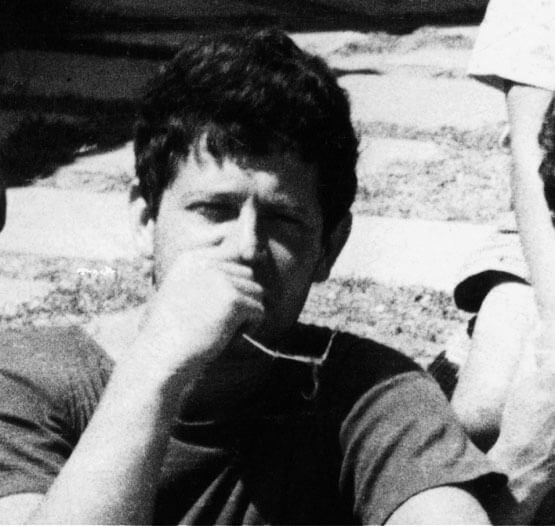
In Argentina he met several cartoonists like Salinas and the Del Castillo brothers. Moreover, he often went to tango dance halls, made friends with the jazz player Dizzy Gillespie, learnt Spanish and discovered other Latin-American writers like Octavio Paz, Leopoldo Lugones, Jorge Luis Borges and Roberto Arlt. As to his love life, three women where particularly important during this period of his life. The first one was Gucky Wogerer, a Yugoslavian woman that he married in Venice in 1953 and that gave him two children, Lucas and Marina. The second one was Gisela Dester, a woman of German origin that became first his assistant and then his partner. The last one was Anna Frogner, a woman of Belgian origin that, when she was a young girl, had inspired him the main character of “Jungle Drums & O’Hara of Africa”. They had two children, Silvina and Jonas.
n Argentina, Hugo Pratt drew a great number of comic strips and worked for the publisher Editorial Abril. He first published the series “Junglemen” and then, in 1953, he created for the weekly magazine Misterix the character of “Sgt. Kirk” based on the script by Héctor Oesterheld, who in 1957 set up Frontera, a publishing house of his own that launched the magazines Hora Cero and Frontera, on which Hugo Pratt published, respectively, “Ernie Pike” and “Ticonderoga”. At the same time, Hugo Pratt and Alberto Breccia taught drawing at the Esquela Panamericana de Arte and among their students there were also Walter Fahrer and José Muñoz. When some years later that art school opened a branch in Brazil, Pratt spent six months in Sao Paulo.
Inspired by the clear contrast between black and white in Milton Caniff’s works, his marked tendency to give predominance to graphic elements asserted itself and Pratt started to write his stories alone. The first one was “Ann y Dan” (current title “Jungle Drums & O’Hara of Africa”), which was published in Argentina on Supertotem.
From the summer of 1959 to the summer of 1960, Hugo Pratt lived in London. Supported by some English scriptwriters, he produced there some war comic strips for Fleetway Publication (published in War Picture Library), while attending at the same time the Royal Academy of Watercolour. In 1962 he drew and scripted “Capitan Cormorant” and “Wheeling”.
Since Argentina was going through a very difficult economic period that made it quite hard for cartoonists to work, Hugo Pratt decided to return to Italy.
From 1962 to 1967 Pratt worked for Il Corriere dei Piccoli (an Italian children magazine), drawing “Le avventure di Simbad” (Simbad’s adventures) and “Le avventure di Ulisse” (Ulysses’ adventures). He also created “Billy James” in 1962 and “Le avventure di Fanfulla” (Fanfulla’s adventures) in 1967 on the basis of the scripts by Mino Milani, chief editor of the magazine, and “L’isola del tesoro” (Treasure Island) and “Il ragazzo rapito” (Kidnapped), two comic adaptations of the homonymous novels by Stevenson. In the same period he also worked with Alberto Ongaro creating with him the comic series “L’Ombra” (The shadow).
In 1967 Hugo Pratt met Florenzo Ivaldi, a Genoese fan of comics. They decided to launch a monthly to present to the Italian public as well as his Argentine production, American classics and its novelties.
In the first issue of the magazine entitled “Sgt. Kirk ”, nine tables of a new story appear“ A Ballad of the Salty Sea ”where the character of Corto Maltese makes his debut.
In 1969 Hugo Pratt met at the 5th International Fair in Lucca Georges Rieu, chief editor of the French weekly magazine Pif, who decided to publish Pratt’s comics in France. While on the train from Genoa to Paris, Pratt decided to resurrect Corto Maltese. That would be the turning point of his career.
Corto Maltese reappeared in April 1970 in the comic series “The Secret of Tristan Bantam”, which, being published in a magazine with a great circulation, would be the real starting point of Pratt’s career. As a matter of fact, from 1971 on, Pratt was considered by comic experts as one of the most important cartoonists in the world. The series featuring Corto Maltese would include, in total, 29 stories.
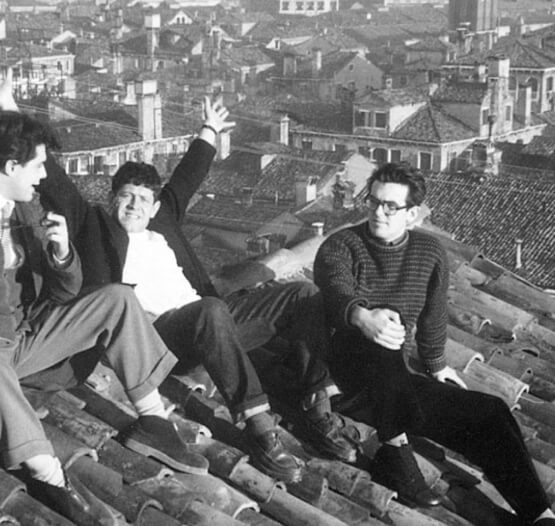
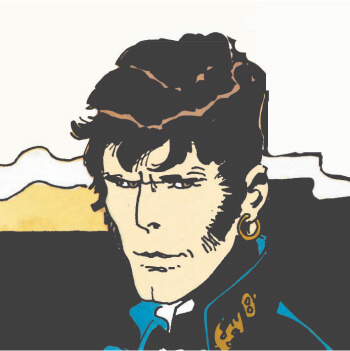
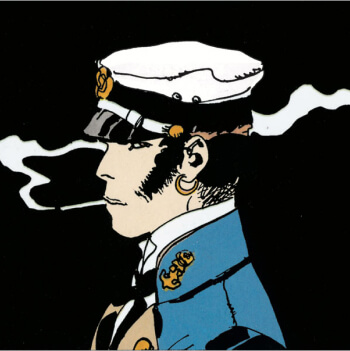
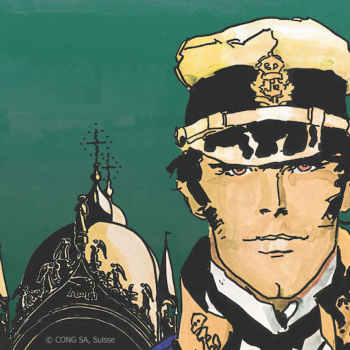
The success of Corto Maltese in France spread first to Italy and then to many other countries. Hugo Pratt found in the France of the Seventies a very stimulating atmosphere. Therefore, he left Genoa and settled in Paris while going on travelling throughout the world and becoming himself a real “character” to the extent that Alberto Ongaro made him the hero of one of his novels and Milo Manara turned him into the main character of the series “H.P. e Giuseppe Bergman”. The national TV networks of many countries, including the Italian public broadcasting company RAI, produced several programmes and reportage on him and the places described in his stories. In addition to Corto Maltese, in 1969 Pratt created the comic series “The Scorpions of the Desert” published on the magazine Sgt. Kirk. He developed it until 1994 creating, in total, 5 episodes, the last one of which was “Brise de mer”.
He also created for the publisher Bonelli 4 stories for the series “Un uomo un’avventura” (One man, one adventure): “L’uomo del Sertão” (The man from Sertão), “L’uomo della Somalia” (The man from Somalia), “L’uomo dei Caraibi” (The man from the Carribean), and “L’uomo del Grande Nord” (The man from the Great North), which in 1991 was made into a film entitled “Jesuite Joe”. In 1983 he wrote for Manara “Tutto ricominciò con un’estate indiana” (Indian summer) and in 1991 “El Gaucho”. In 1984 he created “Cato Zulù”. “Mu”, the last adventure of Corto Maltese, was published in 1988 in the homonymous magazine edited by Rizzoli. The relative comic book was published in 1992. Moreover, the Italian air force chose to celebrate its 70th anniversary through Hugo Pratt’s imagination. “In un cielo lontano”, which was published in 1993, is a story about aviation set in the colonial world witnessed by Pratt during his childhood.
In 1994 he set up in Rome together with Patrizia Zanotti, his assistant and colourist for many years now, the publishing house Lizard, which currently edits all Pratt’s works.
Hugo Pratt not only drew comic strips, but also described them in his novels like “Le pulci penetranti” (Penetrating fleas), “Jesuit Joe”, “Il romanzo di Kriss Kenton” (Kriss Kenton’s novel), “Vento di terre lontane” (Wind from faraway lands) and “Avevo un appuntamento” (I had a date). He told the story of his life, which was amazingly full of interesting stories and adventures, in several interview-books like “Il desiderio di essere inutile” (The desire to be useless), “All’ombra di Corto” (In the shadow of Corto) and “Le memorie di Corto” (Corto’s memories). He also produced for Einaudi the novel version of “Ballad of the Salt Sea” and “Corto Maltese in Siberia”, which was published after his death.
At the beginning of 1995, Pratt created “Morgan”, his last story, which is a romantic adventure set in Italy during the Second World War. He also started the story “Uomini a sei zampe” (Six-leg men) on behalf of Agip but he never finished it. In 1995 he also completed the third part of “Wheeling”, doing his last watercolours on the Indians of North America for the preface of the book, which included the whole series started in 1962.
Hugo Pratt’s imagination left its unmistakable mark even in the most varied advertising fields, from a Formula 1 car featuring the colours of Gitanes cigarettes and Invicta knapsacks, to the commercial of the bubbly Carpené Malvolti and French phone cards. Pratt’s characters feature on many film posters, covers of records by singers like Paolo Conte, Sergio Endrigo, Kadja Nin, Lio and Sylvie Courvoisier. While Hugo Pratt was exhibiting his works in several important museums throughout Europe like the Grand Palais in Paris, Corto Maltese became the “ambassador” of several towns like Concarneau as well as the subject of many degree theses. Moreover, the French Minister of Culture Jack Lang appointed Pratt “Knight of Arts and Letters”, Mitterand gave the Formula 1 driver Jacques Lafitte the Corto Maltese stories as present, and Corto Maltese was mentioned in several American movies like “Batman” by Tim Burton and “Hannah and Her Sisters” by Woody Allen.
From 1983 on, Hugo Pratt lived in Switzerland in his home in Grandvaux on the Lake of Geneva (Lac Léman), where he died on 20th August 1995.
Grazie a lui il mondo della cultura ufficiale ha cominciato a cambiare l’atteggiamento di distanza nei confronti del fumetto, molti si sono resi conto che anche la striscia può essere considerata una forma d’arte.